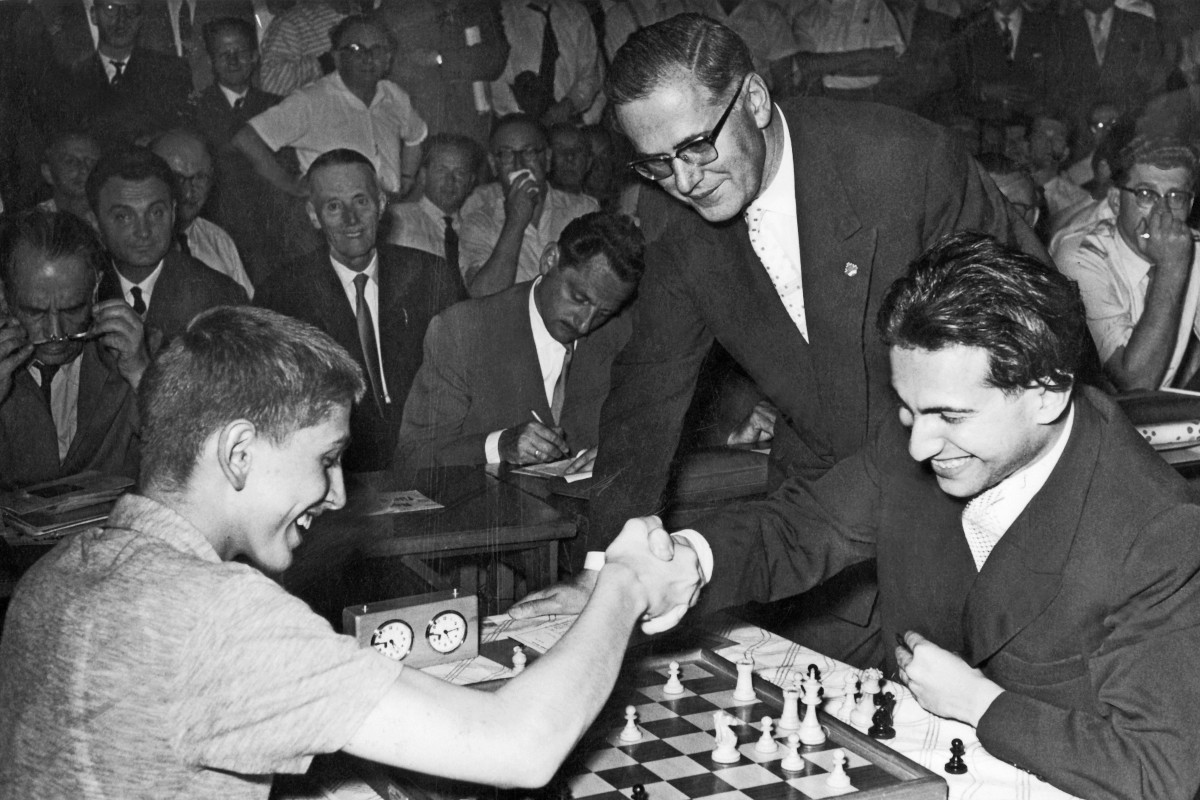


[Note that Jon Speelman also looks at the content of the article in video format, here embedded at the end of the article.]
Years ago the great Mikhail Tal pithily expounded a critical aspect of all out attacking chess: “They can only take one piece at a time” (I don’t have the exact quote but know the gist).
In full battle cry, Tal’s instinct was not to retreat attacked pieces, especially minor pieces: but to pour more oil on the fire by putting further units en prise. Not only was this often the correct tactical decision, but it could also have a powerful psychological effect, though the example we start with is absolutely sound.
Here Black played 18...h6?, presumably intending to get some play after 19 Bxh6 Ng4, but 19 Bxe6! was utterly devastating, and Tal won a few moves later.

Mikhail Tal in Hoogeveen, 1976 | Photo: Rob Meremiet / Anefo
I was reminded of Tal’s quote by a game played earlier this week in Yerevan, which I saw online as the days ticked down to the beginning of Wijk aan Zee.
Black had just played 17...Bh4-d8, believing that he could thus keep his position intact. But the beautiful 18 Nf5! crushed his hopes, and in fact he resigned just three moves later faced with mate-in-one!
18....0–0 [18...g6 19.Nd6+ Kf8 20.Qf3 Rh7 (20...f5 21.exf6 Nxb3 (21...exd5 22.Rhe1 Be6 23.Qxd5!) 22.Nf4) ]
19.Nf6+ gxf6?!
[Or 19...Bxf6 20.exf6 Nxb3 (20...Nd7 21.Ne7+ Kh7 22.Qxa5) 21.Nxh6+ gxh6 22.Qxh6]
20.Qg4+ 1–0
The pretty self fork set me thinking, and I began by finding a short video by Simon Williams on forks which included a famous game in which Bobby Fischer self forked against Tal and got the advantage but later lost.
13.Bd5! Ra7 followed.
Forking your own pieces requires bottle, and I’ve entitled the column with this in mind while taking a small sideswipe at our “Great Leader” as people familiar with UK politics will note.
I began to wonder how (un)common self forking is and searched through a database of just over 3 million games, first for those which reached a position with Nd5, Nf5 versus d6, e6, f7, and then Bd5, Nf5 versus the same pawns. There were about a hundred of the former and fifty odd of the latter, including a well known theoretical position in the Sicilian Velimirovic attack.
And while a good proportion of these saw the e-pawn advance to fork the pieces, there were also many in which the pieces self forked. There must also be occasional instances of self forks with other pieces on other squares or played by Black, but I suspect that they are rarer.
In any case, if you know of any of these, please do mention them in the comments here or email me direct and I’ll publish them in due course.
For the moment, a few more examples of the 2-knight self fork and the bishop-and-knight.
Select an entry from the list to switch between games